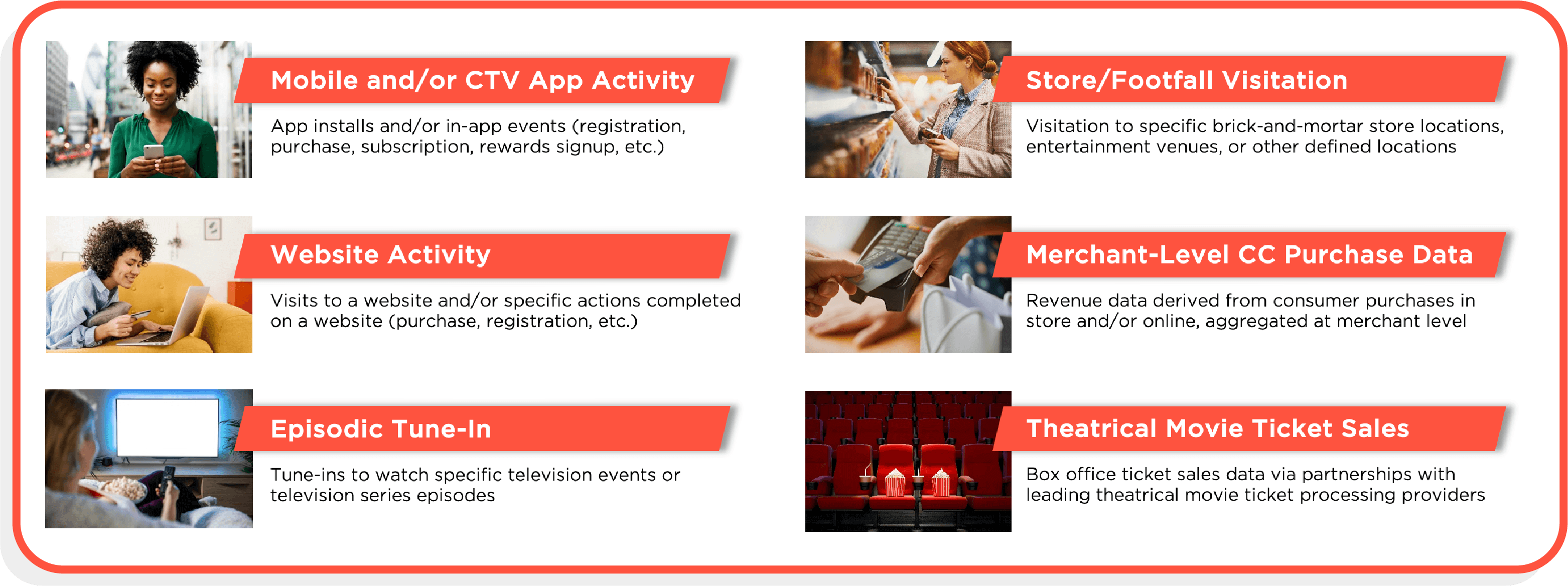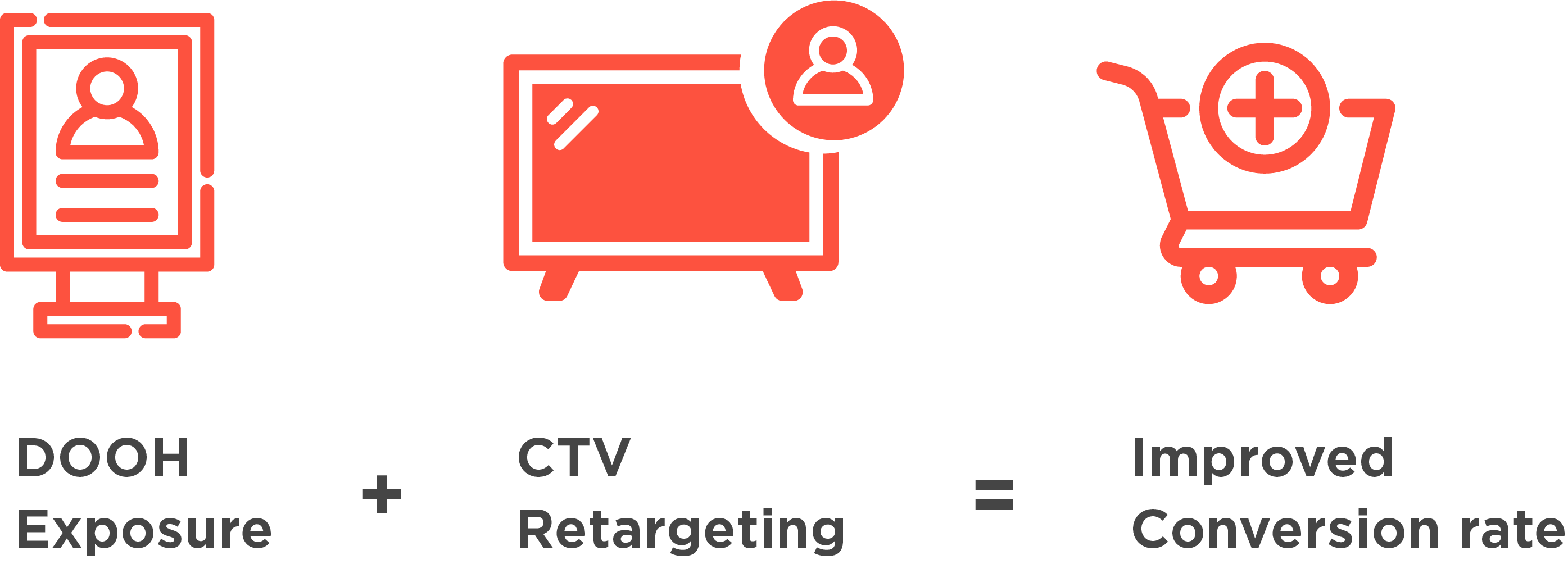Answers to your questions from CES 2025 + CTV insights webinar
The 2025 Consumer Electronics Show (CES) in Las Vegas showcased connected TV’s ongoing transformation from emerging channel to advertising powerhouse, with innovations in commerce, measurement, and viewer experience reshaping how brands engage audiences. The dramatic shifts on display highlight the convergence between linear TV and streaming, as the industry moves toward integrated solutions that expand reach while elevating the viewing experience.
A new ecosystem continues to emerge, with consumer electronics manufacturers including Samsung, LG, Roku, VIZIO, and Amazon becoming crucial inventory gatekeepers. Innovations like shoppable video and interactive CTV formats offer advertisers unprecedented opportunities to blend content discovery with commerce, creating more personalized and less intrusive brand engagement.
Advancements in measurement and analytics, such as the Peer39 CTV Quality Score and clean room technologies, underscore CTV’s evolution toward data-driven precision. AI-powered solutions are supercharging targeting capabilities while ensuring brand safety—critical as streaming platforms increasingly dominate the media landscape. The future of CTV performance, as envisioned at CES, balances advertising efficacy with enriched viewer experiences to drive meaningful engagement and outcomes.

From CES Insights to Performance Reality
Kochava Foundry’s recent webinar, The CES Effect: CTV Performance & Momentum in 2025, brought together industry experts Grant Simmons, VP of Kochava Foundry, and Grant Cohen, GM of Kochava Measurable Extension, to explore these developments and their implications for advertisers. The duo discussed how CTV’s growing prominence at CES reflects the medium’s evolution into a sophisticated performance marketing engine.
Key topics included:
- The ongoing shift from linear to CTV and its impact on mediation and ad serving
- Opportunities emerging from the democratization of ad buying
- Role of AI in enhancing ad manager solutions
- Cross-channel audience targeting through Kochava Measurable Extension
The session reinforced how Kochava measurement capabilities reliably link CTV exposure to concrete outcomes—from app activity and website engagement to footfall visitation. This ability to understand the complete consumer journey positions CTV as both brand builder and performance driver in today’s fragmented media landscape.
For this follow-up piece, the Foundry Team has gathered audience questions to address and elaborate upon in further detail.
Check out the full webinar on demand.
Expert Q&A: Your CTV Questions Answered
With Grant Simmons, VP of Kochava Foundry
Let’s unpack the key questions that emerged from our discussion.
Core Understanding & Proof Points
How can agencies prove they’re running CTV traffic?
The days of taking CTV performance claims at face value are over. Today’s measurement stack must include tools that validate everything from view-through rates to completion metrics, while third-party analytics and attribution solutions connect living room ad exposure to concrete user actions and engagement on digital platforms. Look for partners who can provide independent verification that ads not only run but also drive measurable impact across your conversion funnel.
How difficult is measurement and attribution across distributed channels?
While cross-channel measurement presents unique challenges compared to programmatic, advances in data ingestion frameworks have made it both achievable and increasingly precise. The key is understanding and accounting for varying reporting latencies across channels while maintaining consistent measurement standards. We’re seeing strong results with always-on measurement approaches that provide continuous optimization insights.
What KPIs matter most for CTV campaigns vs. mobile?
CTV requires a more nuanced view of success than mobile’s click-centric metrics. While mobile ad KPIs often emphasize direct response, CTV shines in metrics such as viewability, completion rates, and brand lift. Beyond these, we track how CTV ad impression exposure influences downstream behaviors—from app installs to in-store visits. Particularly interesting is CTV’s impact on search performance, which advertisers can measure within their own data. The focus should be on post-view conversion actions that provide insights into the overall impact on consumer behavior, rather than just immediate response metrics. This approach helps quantify CTV’s increasing role in building awareness and driving concrete business outcomes.
Contact Kochava to find out how you can measure outcomes for your CTV campaigns, including:

Channel Integration & Strategy
Is the complete CTV scenario purely awareness-focused or driving measurable performance?
Today’s CTV excels at both brand building and performance driving. While CTV creates awareness through engaging, high-impact content, modern measurement capabilities tie exposure directly to conversions and customer behaviors across platforms. Success comes from taking a balanced approach that optimizes for both immediate response and long-term brand building, tracking everything from tune-in rates for specific shows to merchant-level purchase data. This ensures that advertisers can leverage CTV’s unique ability to create memorable brand moments while driving measurable outcomes across the customer journey.
How does CTV enhance rather than compete with linear TV?
Think of linear TV as your mass-reach brand storytelling platform, particularly effective in key geographic markets. CTV then functions as your precision targeting and conversion engine, reinforcing brand messages with personalized calls to action. While linear TV typically relies on broad demographic targeting, CTV enables advertisers to reach specific audiences based on viewing habits and preferences. This complementary relationship allows advertisers to retarget users who engage with linear campaigns, thereby increasing overall campaign effectiveness and maximizing both reach and response.
How can CTV campaigns integrate effectively with mobile and DOOH?
Success in cross-channel integration demands more than just coordinated measurement—it requires seamless customer experiences across CTV, mobile, and digital out-of-home (DOOH) touchpoints. The Kochava attribution framework enables precise audience segmentation and frequency management across channels, ensuring that each platform delivers maximum impact while maintaining message consistency. We’re seeing particularly strong performance when advertisers create unified experiences that bridge awareness on DOOH and CTV to action on mobile and web.

Industry Evolution & Innovation
What key CES 2025 innovations will impact CTV performance most this year?
Two transformative developments emerged at CES 2025: First, democratization of ad buying through improved tooling is opening CTV to small and medium-sized businesses (SMBs) and in-house teams. Second, comprehensive AI integration is revolutionizing the entire campaign lifecycle—from creative optimization to automated bidding strategies to customer service support for self-serve platforms. These advances are particularly powerful in enabling sophisticated campaign management while reducing complexity. More advertisers can now access CTV performance potential while creating compelling campaigns.
What announcements/insights do you see reducing fragmented serving and measurement?
Beyond AI advances, we’re seeing promising developments in self-serve models that democratize access while simplifying campaign management. Companies are developing increasingly sophisticated solutions for seamless cross-platform buying and measurement capabilities, even as the ecosystem remains diverse. The key is enabling unified measurement without sacrificing the competitive advantages platform differentiation offers publishers and advertisers.
Use Cases
What are you doing for retailers and their brands to measure and deliver attribution?
Our attribution framework connects CTV exposure to both digital and physical outcomes through privacy-first measurement technology. This enables advertisers to track the complete purchase journey—from initial CTV exposure through mobile engagement, ecommerce transactions, and in-store visits. For retailers, this means understanding not only whether their CTV campaigns drive foot traffic, but also how viewing behavior influences merchant-level purchase data and customer lifetime value. The key is creating a holistic view of the customer journey that spans from awareness through final purchase, whether online or in-store.
With fresh concerns about brand safety on Meta and X, do you see advertising dollars migrating to CTV?
While brand safety concerns certainly won’t hurt CTV’s growth, performance ultimately drives budget allocation. If CTV performance can match or exceed that of other channels while providing a more brand-safe environment, we’ll see accelerated dollar shifts. However, advertisers may continue leveraging high-performing channels despite brand safety concerns if the results justify it. The key is measuring true incremental value across channels.
Technical Implementation & Control
Who will control reach and frequency—DSPs or ad servers?
The walled garden reality of CTV creates unique challenges that transcend traditional DSP and ad server capabilities. Independent measurement providers are emerging as the natural solution for cross-platform reach and frequency management, as they can span these walls while maintaining user privacy and platform relationships. Success requires intentional collaboration among multiple players in the ecosystem to create seamless campaign execution while preserving the competitive advantages of platform differentiation.
Why use a multi-SSP strategy to improve campaign results?
No single platform commands majority market share—even Roku, the largest streaming platform. With millions of users exclusive to certain devices or services, multiple SSPs become necessary to achieve meaningful reach. This fragmentation, while complex to manage, ultimately benefits advertisers through increased competition and innovation.
What about fragmentation in CTV’s 2025 upfronts?
Fragmentation shows no signs of decreasing, particularly with Netflix and other players entering the supply side. However, new tools and technologies make it easier to manage this complexity while ensuring efficient audience targeting. Success lies in embracing the diversity of platforms while implementing unified measurement and optimization strategies.
Got more questions on CTV performance measurement?
Ready to unlock your full CTV performance potential? Whether you’re expanding into CTV or optimizing existing campaigns, Kochava and the Kochava Foundry team are ready to help you drive measurable outcomes across screens. Set up an expert consultation with us to explore measurement and optimization strategies that keep you ahead of the curve.
Need a measurement and attribution platform for your CTV strategy? Explore Kochava solutions here.



